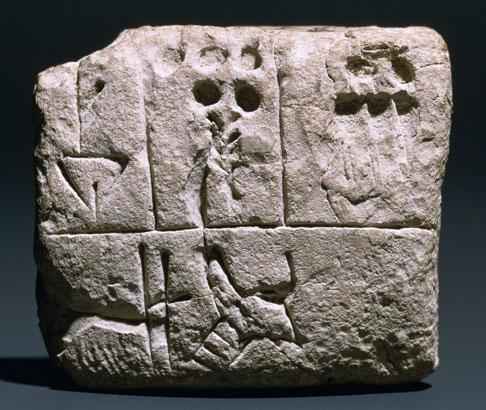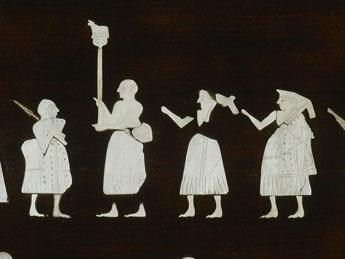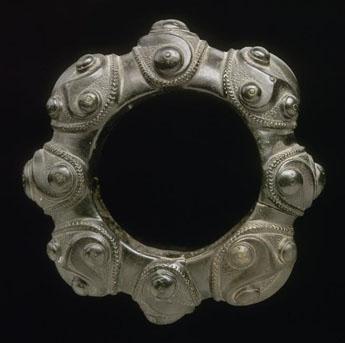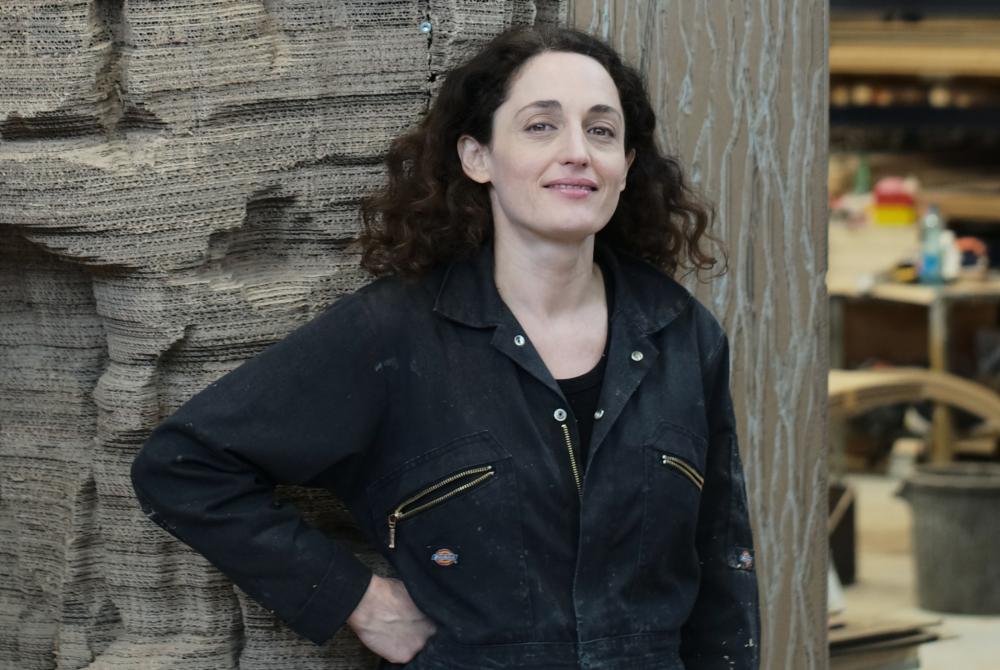Votre panier est vide
Besoin d'inspiration ?
Rendez-vous dans le programme en ligne du GrandPalais
Article -

L'Histoire commence avec l'écriture.

In around 3000 BC, with the invention of writing, Mesopotamia and Egypt were the first civilizations to leave Prehistory and enter History, thus marking the beginnings of Antiquity.
Community life was organized into city-states (towns). These were run by important people: war lords, priests and aristocrats. Art was a way of showing the power of this elite.
There was significant progress in metallurgy (the working of metal) in this period. This skill would enable human societies who mastered it to hold centre stage.
After copper and gold, humans succeeded in creating alloys (mixtures of metals), such as bronze (the Bronze Age period) and then to extract the ore from iron and forge it (the Iron Age period). Craftsmen produced numerous objects with these new materials: weapons, jewellery, crockery, sculptures and solid and more highly developed tools.
These innovations appeared in the Middle East and a little later in Europe and the Far East (China). In the 2nd millennium BC, under the Shang Dynasty, Chinese bronze-workers invented and used the lost-wax casting technique. They manufactured massive ritual vases, discovered by archaeologists in tombs.
In the 1st millennium BC, in Europe, the Celts were the champions of metallurgy. The decor of their object became sophisticated, constructed according to the mathematical rules of the Pythagorean School.


Votre panier est vide
Besoin d'inspiration ?
Rendez-vous dans le programme en ligne du GrandPalais
See content : In the fantastic world of Eva Jospin: 8 questions for the artist

Article -
At the Grand Palais, Eva Jospin's "Grottesco" exhibition offers a timeless journey. Mysterious caves, sculpted nymphaea, petrified forests and "embroidered tableaux" come together to form a world apart. In this interview, the artist reveals her sources of inspiration, her relationship with cardboard and embroidery, and the way she turns each viewer into an explorer of her fantastical landscapes.
See content : Mickalene Thomas at the Grand Palais: an ode to love and black beauty!

Mickalene Thomas, Afro Goddess Looking Forward, 2015
Article -
It’s happening today! The exhibition All About Love opens its doors. With flamboyant portraits, self-assured bodies and bold expressions of femininity, Mickalene Thomas celebrates the beauty of Black women at the Grand Palais. A joyful and committed...
See content : It's open! Eva Jospin and Claire Tabouret: two new exhibitions at the Grand Palais

Article -
Until March 15, you're invited to explore the fascinating worlds of Eva Jospin and Claire Tabouret, presented in two Grand Palais galleries linked by the same entrance.